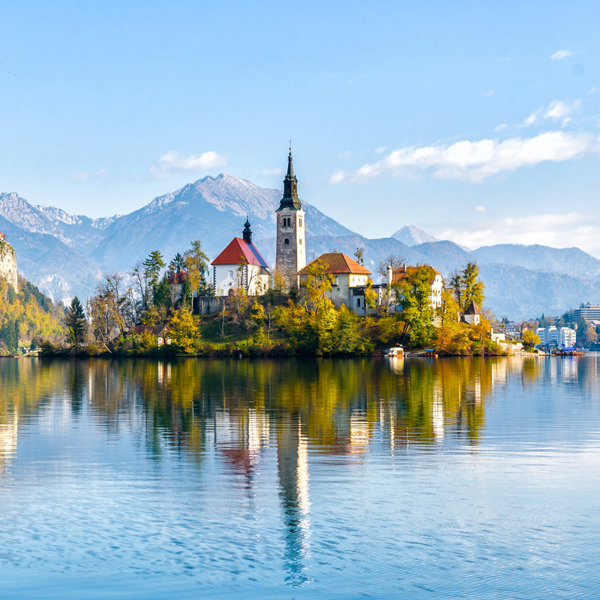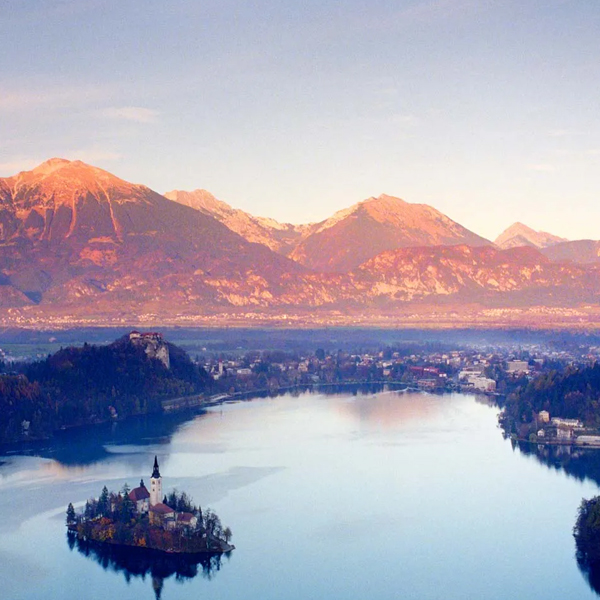
Slovenia is a small European country with a rich history. With an area of only 22,098 square kilometers, it has a population of just over two million people. This small country packs a mighty punch for tourism, with attractions such as the Julian Alps and Lake Bled. If you are interested in visiting Slovenia, get a visa in advance. This can be done through the Slovenian embassy or consulate in your home country. Here are some tips on getting your Slovenian visa and making the most of your visit.
Slovenia is a beautiful country with a long and rich history. It’s also a country that is quickly making a name for itself in the world of technology. It was recently ranked as one of the top 10 countries in the world for startups. Slovenia may be a perfect choice if you’re looking for a place to visit in 2022.
Slovenia is a country in Central Europe that gained its independence from Yugoslavia in 1991. The country has a population of just over 2 million and is located between Austria and Hungary. Slovenia has a diverse geography, with mountains to the east and south, rolling hills to the west, and the Alps to the north.
The first human inhabitants of what is now Slovenia are believed to have been the Illyrians. The Roman Empire conquered present-day Slovenia in 98 AD and held it until the 5th century AD. After the fall of the Western Roman Empire, present-day Slovenia was divided among various Germanic tribes. In 927, King Otto I of Germany defeated the Magyars at Lechfeld and thus established control over much of Central Europe. The Slovenes emerged as a distinct people, adopting Christianity in 966. In 1242, they were subjugated by King Béla IV of Hungary and remained under Hungarian rule until World War I.
Slovene activists formed secret societies following World War I to free their country from Hungarian rule. On June 25, 1941, Nazi Germany invaded Yugoslavia and, within two months, succeeded in occupying most of Slovenia. The Nazis intended to create a Greater German Reich that would include all of Europe under Nazi rule. The Slovenes resisted Nazi efforts to assimilate them into German society and developed their own culture. In 1944, following Allied bombing raids on Yugoslav targets, Yugoslav authorities ordered all Slovenes to report for forced labor in Germany. About 250,000 Slovenes chose to resist and fled to the mountains, where they formed partisan groups that fought against the Nazis. In May 1945, following the Battle of Bergen-Belsen, the remaining German forces in Slovenia surrendered.




 Qatar
Qatar  Kuwait
Kuwait Oman
Oman Yemen
Yemen Saudi Arabia
Saudi Arabia  Bahrain
Bahrain Egypt
Egypt India
India  Turkey
Turkey Romania
Romania Russia
Russia Ukraine
Ukraine United Kingdom
United Kingdom Canada
Canada  United State of America
United State of America  Singapore
Singapore Malaysia
Malaysia  Japan
Japan  Thailand
Thailand  Mexico
Mexico  Hong Kong
Hong Kong  Philipines
Philipines Vietnam
Vietnam  Armenia
Armenia  kazakhstan
kazakhstan  Australia
Australia New Zealand
New Zealand South Korea
South Korea South Africa
South Africa Uganda
Uganda Ghana
Ghana Kenya
Kenya Sudan
Sudan Morocco
Morocco Syria
Syria Lebanon
Lebanon Iran
Iran Iraq
Iraq Austria
Austria  Belgium
Belgium The czech republic
The czech republic Denmark
Denmark Finland
Finland France
France Greece
Greece Iceland
Iceland Italy
Italy Latvia
Latvia Liechtenstein
Liechtenstein Lithuania
Lithuania Luxembourg
Luxembourg Malta
Malta Norway
Norway Poland
Poland Slovakia
Slovakia Slovenia
Slovenia Sweden
Sweden Switzerland
Switzerland Afghanistan
Afghanistan Albania
Albania Algeria
Algeria American Samoa
American Samoa Andorra
Andorra Angola
Angola Anguilla
Anguilla Bangladesh
Bangladesh  Barbados
Barbados  Belarus
Belarus  Belize
Belize  Benin
Benin  Bermuda
Bermuda  Bhutan
Bhutan  Bolivia
Bolivia  Bosnia and erzegovina
Bosnia and erzegovina  Botswana
Botswana  Brazil
Brazil  Brunei
Brunei  Bulgaria
Bulgaria  Burkina Faso
Burkina Faso  Burundi
Burundi  Cambodia
Cambodia  Central African public
Central African public  Chad
Chad  Chile
Chile  Colombia
Colombia  Comoros
Comoros  Cook Islands
Cook Islands  Costa Rica
Costa Rica  Croatia
Croatia  Cuba
Cuba  Cyprus
Cyprus  Democratic Republic of Congo
Democratic Republic of Congo Djibouti
Djibouti  Dominica
Dominica  Equatorial Guinea
Equatorial Guinea  Eritrea
Eritrea  Ethiopia
Ethiopia  Faroe Islands
Faroe Islands  Fiji
Fiji  Gabon
Gabon  Gambia
Gambia  Georgia
Georgia  Greenland
Greenland  Grenada
Grenada  Guadeloupe
Guadeloupe  Guam
Guam Guyana
Guyana  Haiti
Haiti  Honduras
Honduras  Indonesia
Indonesia  Ireland
Ireland  Jamaica
Jamaica  Jordan
Jordan  Kiribati
Kiribati  Kosovo
Kosovo  Kyrgyzstan
Kyrgyzstan  Laos
Laos  Lesotho
Lesotho  Liberia
Liberia  Libya
Libya  Macau
Macau  Madagascar
Madagascar  Malawi
Malawi  Maldives
Maldives  Mali
Mali  Marshall Islands
Marshall Islands  Martinique
Martinique  Mauritania
Mauritania  Mauritius
Mauritius  Mayotte
Mayotte  Micronesia
Micronesia  Maldova
Maldova  Mongolia
Mongolia  Montenegro
Montenegro  Mozambique
Mozambique  Myanmar
Myanmar  Namibia
Namibia  Nauru
Nauru  Nepal
Nepal  Nicaragua
Nicaragua  Niger
Niger  Nigeria
Nigeria  Norfolk Island
Norfolk Island  North Korea
North Korea  North Macedonia
North Macedonia Pakistan
Pakistan  Palau
Palau  Palestine
Palestine  Panama
Panama  Papua New Guinea
Papua New Guinea  Paraguay
Paraguay  Peru
Peru  Puerto Rico
Puerto Rico  Republic of the Congo
Republic of the Congo  Reunion
Reunion  Rwanda
Rwanda  Saint Helena
Saint Helena  Saint Kitts and Nevis
Saint Kitts and Nevis  Saint Lucia
Saint Lucia  Saint Vincent and the Grenadines
Saint Vincent and the Grenadines  Samoa
Samoa  San Marino
San Marino  Sao Tome and Principe
Sao Tome and Principe  Senegal
Senegal  Serbia
Serbia  Seychelles
Seychelles  Sierra Leone
Sierra Leone  Solomon Islands
Solomon Islands  Somalia
Somalia  South Sudan
South Sudan  Sri Lanka
Sri Lanka  Suriname
Suriname  Swaziland
Swaziland  Taiwan
Taiwan  Tajikistan
Tajikistan 










